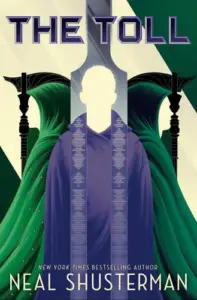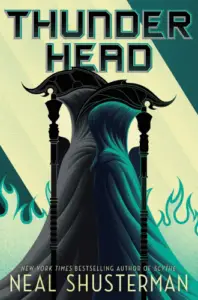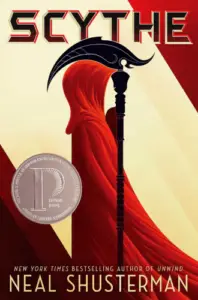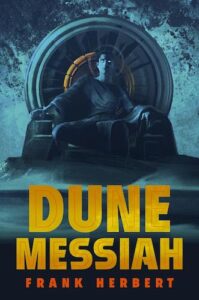The Three-Body Problem
Book Author: Liu Cixin
Summary reviewed by:
Terrence Timmons
Terrence Timmons
Analyst
Bachelor of Arts (BA), University Of California, Santa Barbara 2019
With over 4 years of experience as an analyst. Terrence Timmons is committed to analyzing summaries without compromising on quality.
The Three-Body Problem: Summary
Imagine a universe where the survival of civilizations is thinner than a razor's edge—welcome to "The Three-Body Problem," a riveting saga that begins the renowned Remembrance of Earth's Past trilogy.
Set against the backdrop of China's Cultural Revolution and extending into an international (and interstellar) crisis in the contemporary era, this novel weaves a complex narrative of humanity's first contact with an extraterrestrial civilization from the distant star system of Alpha Centauri. The Three-Body Problem introduces us to a world where the boundaries of physics are pushed to their limits, human nature is examined under the lens of cosmic significance, and the fate of two civilizations hangs in balance.
As the story unfolds from Earth to the unpredictable Trisolaris, readers are catapulted into an epic interstellar chess game. With stakes higher than ever imagined, the question becomes not only whether humanity can navigate its internal strife but also if it can withstand the cold, calculating gaze of the Trisolarans. Perfect for those intrigued by the vastness of the cosmos and the intricacies of human ingenuity, this novel promises an unforgettable journey into the unknown.
Spoilers (watch a short ad to reveal spoilers)
The Three-Body Problem: Genres
Science Fiction
Hard Science Fiction
Space Opera
Alien Invasion
Philosophical Fiction
The Three-Body Problem: Main Characters
Ye Wenjie: A disillusioned astrophysicist whose trauma from the Cultural Revolution leads her to make a decision that endangers humanity. Her values are shaped by despair and a lack of faith in humanity’s capacity for good, demonstrated when she responds to the Trisolarans’ message.
Wang Miao: A nanotechnologist drawn into the mystery of the Trisolaran threat. His values of curiosity and determination are shown through his relentless pursuit of truth, regardless of the personal cost.
Shi Qiang (Da Shi): A pragmatic and street-smart police officer who helps Wang Miao navigate the complex web of intrigue. His value in practicality and survival instincts is highlighted by his unorthodox methods that often lead to crucial breakthroughs.
Ding Yi: A brilliant physicist and Wang Miao’s friend, embodying the value of intellectual bravery. His openness to the impossible allows him to accept the existence of alien life and contributes significantly to understanding the Trisolaran threat.
The Three-Body Problem: Themes
The Search for Truth: The relentless pursuit of knowledge, regardless of the danger it poses, underscores the narrative. Wang Miao’s investigation into the “Three Body” game and the scientific community’s struggle to understand the Trisolaran phenomenon exemplify this theme.
Cosmic Sociology: The theoretical framework suggesting civilizations in the cosmos naturally conflict over resources, driving the plot and the Trisolarans’ motivation to invade Earth.
Human Nature and Morality: Explored through the characters’ responses to the alien threat, highlighting divisions between those who believe in human resilience and those who succumb to despair or treachery.
Technological Evolution vs. Environmental Sustainability: The contrasting destinies of Earth and Trisolaris showcase the dilemmas faced by civilizations advancing technologically at the expense of their natural environments.
Cultural and Political Commentary: The backdrop of the Cultural Revolution and the global reactions to the Trisolaran threat reflect on humanity’s historical and potential future mistakes, questioning the costs of ideological purity and the survival instinct.
The Three-Body Problem: What You Need to Know
(Contains Spoilers: Perfect for readers seeking a quick review.)
"The Three-Body Problem" weaves an intricate narrative that begins during the Cultural Revolution, with astrophysicist Ye Wenjie witnessing her father's death at the hands of Red Guards. In her grief and disillusionment, she sends a message into space, inviting extraterrestrial life to Earth. This act sets in motion the arrival of the Trisolarans, an alien civilization from a planet plagued by chaotic environmental conditions.
The novel introduces the sophisticated virtual reality game "Three Body," which serves as both a recruitment tool and a means of understanding the Trisolaran world. The Earth-Trisolaris Organization (ETO) emerges, a group of human collaborators aiding the Trisolarans' impending invasion, driven by a belief in the aliens' superiority.
As protagonist Wang Miao delves deeper into the mystery, he uncovers the horrifying reality of the Trisolarans' plans and the existence of sophons, subatomic particles used by the Trisolarans to halt Earth's scientific advancement and monitor human activities. The revelation of these plans and the establishment of the human counter-force set the stage for an impending cosmic conflict. The narrative closes on a tense note, with humanity aware of the Trisolaran threat and bracing for their arrival, setting the scene for the subsequent novels in the trilogy.
The Three-Body Problem: Methodology
In penning this summary, we embarked on a journey deeply rooted in our commitment to delivering an experience that captivates and informs you, our esteemed reader.
Our meticulous approach is driven by a team rich in literary insight and analytical prowess, ensuring each exploration into the vast cosmos of "The Three-Body Problem" is grounded in expert analysis.
Through the lens of themes such as the relentless quest for truth and the intricate dance of human nature and morality, we synthesized the essence of Liu Cixin's masterpiece.
This method not only guarantees the integrity of our summaries but also serves to kindle a flame of curiosity and reflection, inviting you to ponder the profound questions posed by the narrative.
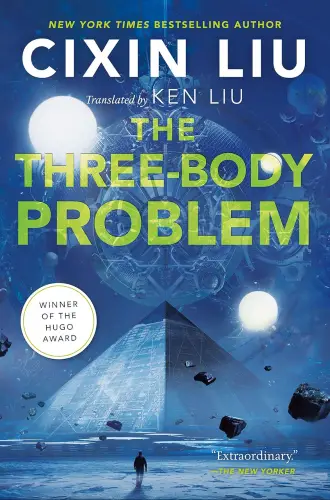

The Three-Body Problem
Date Published: 2008
Disclaimer: As an Amazon Associate I earn from qualifying purchases.

